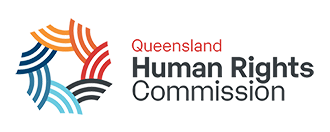Age-friendly workplaces
According to the Australian Bureau of Statistics, Australia’s population is ageing as a result of sustained low fertility and increasing life expectancy. Progressive organisations understand that recruiting and retaining older workers is a strategic response to a shrinking labour pool and ageing client base.
At the other end of the spectrum, the addition of young people in a workplace can bring fresh ideas, different perspectives and skills in new and emerging industries.
Including a range of age-groups in the workplace provides the ideal opportunity to leverage a range of skills and knowledge to achieve productivity, innovation and meet the needs of a diverse market. Age-diversity makes good business sense.
Age-friendly workplaces are inclusive of everyone, regardless of age. When managed effectively, this can bring many benefits to the work team, including:
- a cohesive work environment where team members actively communicate and collaborate;
- greater innovation and problem-solving as a result of combined knowledge and experience across generations;
- increased energy and new ideas can be contributed by younger generations;
- handing down of corporate knowledge and traditions from older generations; and
- business continuity is supported by having a variety of age-ranges represented.
Tips for creating an age-friendly workplace
Creating an age-friendly workplace is not without its challenges. While workers of different ages bring their own unique set of skills and knowledge, they can also have different values, work styles and communication preferences. These differences need to be understood and managed effectively in order to support cohesion and collaboration in the workplace.
Here are some tips for managing age-diversity in the workplace.
Maintain an open mind
One of the main benefits of having an age-diverse workforce is the opportunity to learn, share ideas, gain a variety of perspectives and collaborate to find creative solutions to problems.
However, if inter-generational collaboration is not encouraged or entered into with an open mind, it could result in great ideas and solutions being discounted – or even worse, not being contributed at all.
Understand generational differences
Similar to personality profiling, understanding more about what makes each generation ‘tick’ can help managers and work colleagues to get the best out of their teams.
Communication styles, language, values, expectations and preferred methods of working can all differ across generations. Catering your management or communication style to suit these variations can reap great rewards in terms of team engagement and productivity.
However, keep in mind that while there may be some traits common to each generation, all employees are individuals and should be treated that way. A one-size-fits-all approach to managing or interacting with staff is rarely effective.
Create opportunities for sharing
While each generation of workers will bring their own unique skills and knowledge to the workplace, they also have a lot to learn from each other.
A great way to capitalise on the age-diversity in your workplace is to actively look for opportunities for team members of all ages to work together on projects, enter into peer mentoring or coaching relationships or generally interact in an environment that encourages the sharing of ideas, skills and knowledge.
Use a strengths-based approach
Each employee brings their own unique set of skills, perspectives and experience to the workplace. Supporting them to utilise those unique talents can create more engaged and productive teams. By focussing on what employees are good at, rather than their weaknesses, a team can maximize their skills and consequently their productivity.
For a strengths-based approach to work most effectively it needs to be embraced within and across teams, not just from a top-down approach. This will ensure that all team members are recognising the unique skills and talents of others within the workplace.
Provide flexibility
Employees of all ages have commitments and interests outside the workplace. Family, children, study, health, personal and sporting pursuits can all motivate employees to take time out from the workplace.
Allowing flexibility to accommodate these needs can help all generations to balance work and life commitments, feel valued by their employer and enhance commitment to work.
Making assumptions about an employee or colleague’s skills, knowledge or intentions can influence the way you treat them.
Be aware of unconscious (or conscious) bias when it comes to interacting with people of differing ages and ensure that decision making is based on evidence rather than assumption.
More information and support
- We offer training in unconscious bias for workplaces across all sectors. Find out more about our training.
- Flexible working arrangements:
- Managing generational differences in workplaces:



